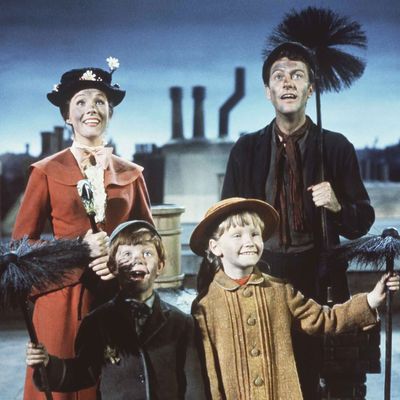
How do kids learn about social class? The short answer: lots of ways. They observe it all around them, learn certain social mores from their parents, and compare their house or apartment to their friends’. Then there are the messages they get from pop culture. That’s the subject of a new paper published in the Journal of Poverty by Dr. Jessi Streib, Miryea Ayala, and Colleen Wixted.
Streib, a sociologist at Duke University, teamed up with Ayala and Wixted, who were students at the time, to take a close look at what messages about class are embedded in blockbuster G-rated movies. They took the 32 G-rated films that, as of January 1, 2014, had grossed more than $100 million, and that included a character who had a social class (Bambi, for example, did not), excluding two films from an older ratings regime that would be unlikely to garner a G today.
Then they watched the films carefully to get a sense of which messages about class they communicated (there have been worse research projects), and published the results in the Journal of Poverty.
Some interesting stuff popped out:
The films mostly feature wealthy primary characters. The researchers evaluated the films’ content to divide primary characters into five classes, from “upper class” to “poor,” and discovered that more than 56 percent of the films’ primary characters were in the top two categories, upper class or upper middle class (it turns out Santa Claus is upper middle class). So, at least compared to the real-world distribution of wealth, middle- and lower-class characters were significantly underrepresented.
The films mostly make class out to not be a big deal.
Streib and her co-authors note that even when characters from lower classes are represented, “their hardships are generally downplayed or erased.”
Two striking examples are Ratatouille and Aladdin. In the former, the main character Remy “finds that the problems with [his] poverty have little to do with material hardships. Rather, he suggests that the biggest problem with poverty is the tastes of the poor; they eat and enjoy what he considers bad food.”
Then there’s Aladdin, where as we all know the titular character starts out as a “street rat.” In that film, poverty is rather explicitly described as just the flip side of insane wealth, as you can see from an exchange between Aladdin and Jasmine, the princess he falls in love with, that the authors excerpt:
Aladdin: The palace looks pretty amazing, huh?
Jasmine, disappointed, responding about the palace where she lives: It’s wonderful.
Aladdin: I wonder what it’d be like to live there, and have servants and valets.
Jasmine: Oh, sure. People who tell you where to go and how to dress.
Aladdin: That’s better than here. You’re always scraping for good and ducking the guards.
Jasmine: You’re not free to make your own choices.
Aladdin: Sometimes you feel so …
Jasmine: You’re just …
Aladdin and Jasmine, simultaneously: Trapped.
Working-class characters are framed differently in successful children’s movies than in adult media.
Streib and the co-authors write:
Frames of working-class characters in the sampled children’s movies are starkly different than those that commonly appear in media targeted at adults. Rather than framed as irresponsible and authoritarian buffoons, most working-class characters are framed as warm and part of close-knit communities. For example, the circus bugs in A Bug’s Life, the servants in Beauty and the Beast, the dwarves in Snow White, and the soldiers in Mulan work and play together, look out for each other, and exhibit a high degree of solidarity. Some of these communities are shown as so warm that more privileged characters are voluntarily downwardly mobile to be part of them. In Cars, for example, Sally leaves behind her upper-middle-class job as a lawyer to join the working-class community of Radiator Springs—a community that she enjoys because everyone looks out for and enjoys each other. In the same movie, Lightning McQueen, a celebrity race car, accidentally enters Radiator Springs. Although he initially plans to leave, he stays after learning what it means to be part of a loving community.
In fact, the authors go on to note, in several films — Mary Poppins and The Sound of Music are two examples — working-class characters “teach upper-middle-class and upper-class characters, mostly men, how to be warm and loving.” These characters have something that richer ones do not: some connection to warmth and empathy and humanity.
The key takeaway, from the authors’ point of view, is that these films legitimize and reinforce class structures. Middle-class and poor people are de-emphasized, as are the difficulties associated with not having enough money. Moreover, climbing the class ladder isn’t presented as particularly difficult.
Now, there are a million ways to interpret all of this. There are very good reasons to focus, as Streib and her co-authors did, on the most successful G-rated films. But would the same themes have jumped out in the same ways if they’d looked at, say, all G-rated films produced since 1980 (setting aside the fact that this would have busted their research budget)? Did these themes pop out because they’re themes audiences like the most, in other words, or do the creators of children’s films think that they’re supposed to have a certain thematic feel to them?
It’s not surprising, of course, that entertainment geared at kids doesn’t contain heavy, depressing messages about how tough it is to get ahead as a working-class person. But to me the interesting question is just how much of an effect entertainment has on shaping kids’ understanding of and expectations about the world. To what extent do these films actually communicate and reinforce messages that wouldn’t have been communicated and reinforced otherwise? How much of it flies over the head of a 4-year-old? It would be interesting to interview a bunch of them about this stuff right after a screening of Aladdin.




